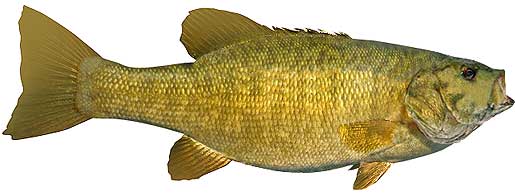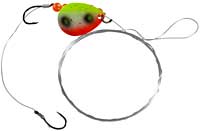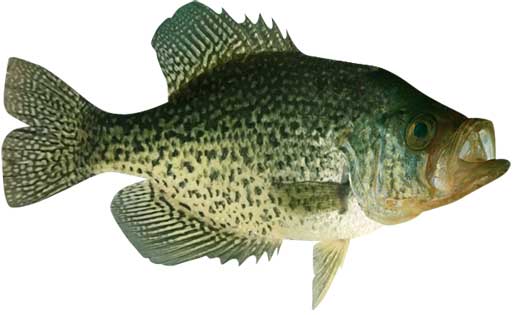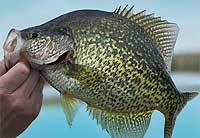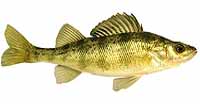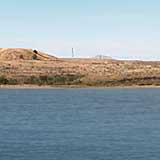Fishing Report For Grayrocks Reservoir, WY
By Rick Seaman
August 30, 2025
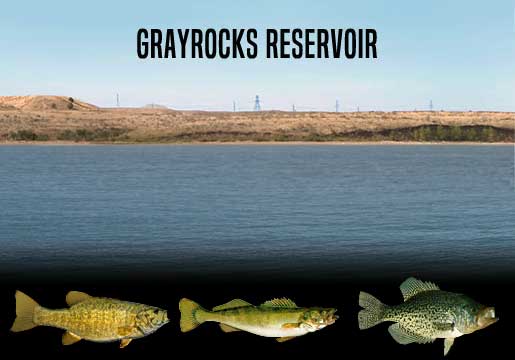
Fishing Reports
Popular Fish Species Grayrocks Reservoir, WY
Smallmouth Bass
Current Report: Good To Very Good
SUMMER. Smallmouth bass, including many trophy-size gems, feed shallow early and late in the day, where they are caught on topwater, crankbaits, swimbaits, Ned rigs and tube baits. Smallmouth bass here feed on crawfish, gizzard shad, and small sunfish. They prefer rocky or gravel bottom areas, as this is where crayfish live. During the hotter parts of the day, they are being caught on points, humps, and ledges 20 to 35 feet deep. Often these deeper fish are part of a large school.
FALL. As Fall is arriving, smallmouth begin to follow schools of baitfish into coves, flats and bays, where crankbaits and slow-rolled spinnerbaits, are very successful. The average fish typically caught averages about 2 pounds, but plenty of 4 to 6 pound smallies are being caught with some regularity. Fishing shallow for smallmouth is often good on cold, windy, cloudy and rainy days.
WINTER. Winter will isolate them around deeper structure, points and creek channels, often suspending in open water above these features. When the lake freezes over, they often move a bit shallower, however ice fishing is discouraged due to unpredictable conditions. After ice out they can generally be found from 30 to 50 feet deep. Here they hold, feeding less frequently, awaiting warmer water to return in Spring. Slow presentations are the order of the day.
SPRING. When water temperatures rise into the 50's, smallmouth move from deep wintering spots to shallower water, generally just outside spawning areas. Look for rip rap, gravel or rocky shores. They feed heavily at this time, and are typically caught on jerkbaits, crankbaits, tube baits, Ned rigs, and crayfish imitating plastics. Once water warms into the high 50's, they move into shallower water, and create nests in gravel or sand areas, then lay their eggs. Nests are often along the edges of weed lines. Females then move to deeper water and males remain to guard the eggs, and then the fry. After a couple weeks, the males also move to slightly deeper water and feed aggressively. Crankbaits, tube baits, Ned rigs, plastic worms, spoons and swimbaits are catching smallies during this period.
Walleye
Current Report: Fair To Good
Spring and Fall are the best seasons for catching walleye, which are one of the prized species here.
SUMMER. The water temperature were warm during summer, and walleye fishing is decent. Throughout Summer, early in the morning, and from dusk to long after dark are good times to catch walleye. At those times they move shallow to feed in low-light conditions. Night fishing has been good, as well. The rest of the time they are cruising flats, rocky points and creek channel edges. When the bite is slow, minnows, grubs and nightcrawlers, fished just off the bottom is catching walleye.
FALL. Early Fall brings cooler temperatures to shallow water, drawing walleye and baitfish into the shallows for a few weeks. Jigs, swimbaits, crankbaits, jerkbaits, and spinnerbaits are all historically good for catching walleye now. Later in Fall, they move out deeper again to 20 to 50 feet deep, or more. Dragging bottom bouncers, or worm harnesses with nightcrawlers or leeches, around ledge drop-offs catches walleye fairly consistently. Good reports are coming from anglers deep trolling or drift fishing. Watch for the bigger walleye to be slightly deeper than the majority of the school.
WINTER. Fishing for walleye can be pretty good through the ice, when there is safe ice. However, most winters ice fishing is discouraged due to unstable ice. Before and after the ice, anglers report catching them in 25 to 60 feet of water, along creek channel edges, rocky humps and ledges. They primarily feed on gizzard shad and small fish, staying close to the bottom. After ice-out blade baits, jigs, swimbaits, spoons, deep-diving crankbaits, and worm harness spinners, are all working while deep trolling or slow drifting.
SPRING. Early Spring brings warming water in the shallows, and draws walleye here to feed, especially rocky areas and inlet channels. Here they will spawn once the water warms to the mid to high 40's. Afterwards, they move to shallow points, flats, shoals and ledges, just off shore, often nearby their spawning locations. Bright colored jigs, tipped with minnows or nightcrawlers typically catch them in 5 to 12 feet of water. Spinnerbaits, jerkbaits and crankbaits are also working when walleye are up shallow.
Black Crappie
Current Report: Good
SUMMER. Water temperatures are typically in the high 70's or low 80's. Summer crappie fishing has been good. In early Summer the hot sun starts warming the shallows, driving crappie to depths of 12 to 30 feet. This is a good time to focus on rocky structure in these depths, that are close to deeper water. Anglers are also locating schools of crappie hanging above deeper structure and creek channel edges.
FALL. Baitfish, which will be moving into shallow flats, coves and bays, will draw crappie into 8 to 10 feet of water, where they will feed heavily in preparation for the cold Winter. Small spoons, along with minnows, hair jigs, and crappie jigs, are good options during this feeding marathon. Late fall starts the migration deeper toward winter holding areas, for both crappie and baitfish. Flutter spoons are ideal during this transition
WINTER. Once the shallows start cooling rapidly, crappie will migrate to deeper holding areas, mostly off shore. At this time they are typically caught using a very slow presentation, in 20 to 50 feet of water or deeper. If they are suspending in open water, they often relate to some cover, or structure change, directly below them.
SPRING. In early Spring, crappie begin staging in 8 to 12 feet of water, just outside spawning bays and shallow flats. Spring is prime time to be on the water, as crappie are moving shallow to spawn. During the spawn, they are typically caught in 2 to 6 feet of water. Brush, wood and vegetation (when available) are where most anglers are catching good numbers using small crappie jigs or live minnows. After the spawn, crappie move outside the spawning area and often hold on the closest cover. Once they move off the beds, anglers are reporting good success using fish finders and forward facing sonar to locate schools of crappie, which tend to stack vertically around cover. Light tackle with 4 lb to 8 lb line is a popular choice.
Fishing Video
Fish species to fish for...
Guide to fishing for largemouth bass, smallmouth bass, channel catfish, black crappie, walleye, yellow perch and tiger muskie at Grayrocks Reservoir in Wyoming.
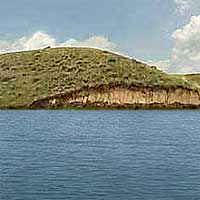
Grayrocks Reservoir is an 1,800-acre lake with than 20 miles of shoreline. Walleye, smallmouth bass, and crappie fishing is the main draw here. Catfish, largemouth bass, trout, perch and tiger muskie also reside here. The shoreline along the south side of the lake is accessible for fishing from the bank.
Primary fish species to catch
Click images for fishing tips and details about each species.
Today's Weather & Forecast
Public Boat Launch Ramps & Landings
Click here for boat ramps.
Fishing License
Click here for a Wyoming Fishing License.
Map - Fishing & Access
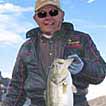
Rick Seaman is a fishing enthusiast with over five decades of fishing experience, a retired tournament fisherman, author of numerous published articles on fishing, and co-author of the book "Bass Fishing - It's not WHAT you throw, It's WHERE you throw it".
Contact Information
Wyoming Game & Fish Department
307 777-4600
Fishing lakes in each state
083025
Grayrocks Reservoir, WY Report
WYOMING


Information about fishing lakes in Wyoming
Grayrocks Reservoir offers bass, catfish, crappie, walleye, perch and muskie fishing in east-central WY.


